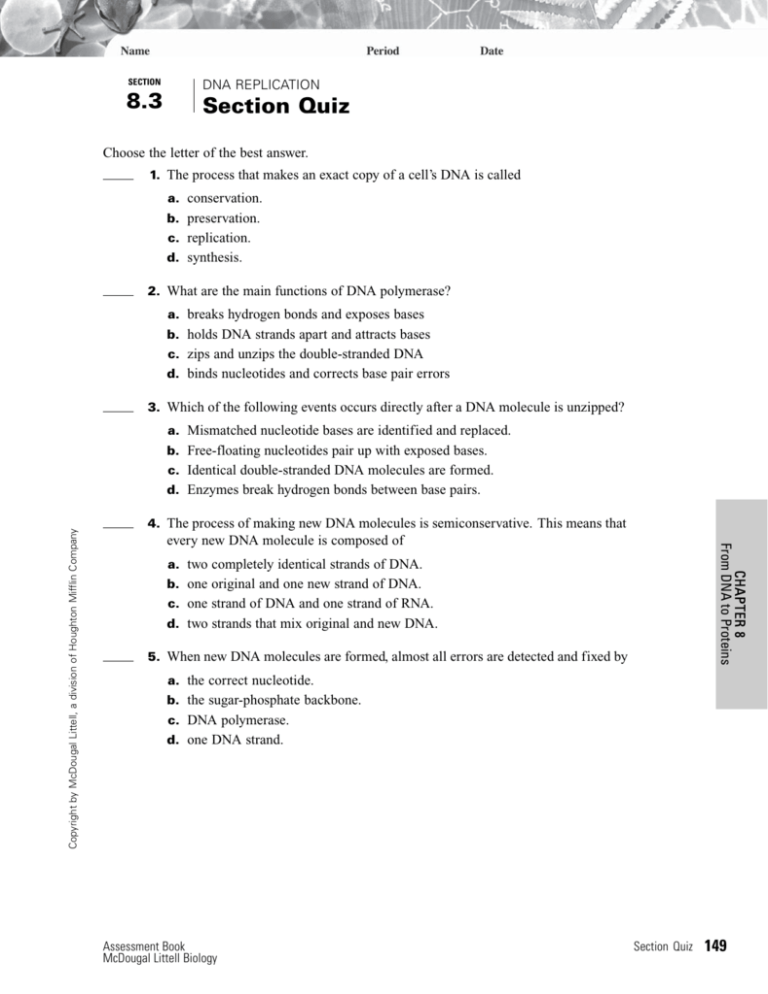DNA Replication Quiz: High School Biology
advertisement

SECTION 8.3 DNA REPLICATION Section Quiz Choose the letter of the best answer. 1. The process that makes an exact copy of a cell’s DNA is called a. conservation. b. preservation. c. replication. d. synthesis. 2. What are the main functions of DNA polymerase? a. breaks hydrogen bonds and exposes bases b. holds DNA strands apart and attracts bases c. zips and unzips the double-stranded DNA d. binds nucleotides and corrects base pair errors 3. Which of the following events occurs directly after a DNA molecule is unzipped? a. Mismatched nucleotide bases are identified and replaced. b. Free-floating nucleotides pair up with exposed bases. c. Identical double-stranded DNA molecules are formed. 4. The process of making new DNA molecules is semiconservative. This means that every new DNA molecule is composed of CHAPTER 8 From DNA to Proteins Copyright by McDougal Littell, a division of Houghton Mifflin Company d. Enzymes break hydrogen bonds between base pairs. a. two completely identical strands of DNA. b. one original and one new strand of DNA. c. one strand of DNA and one strand of RNA. d. two strands that mix original and new DNA. 5. When new DNA molecules are formed, almost all errors are detected and fixed by a. the correct nucleotide. b. the sugar-phosphate backbone. c. DNA polymerase. d. one DNA strand. Assessment Book McDougal Littell Biology Section Quiz 149






